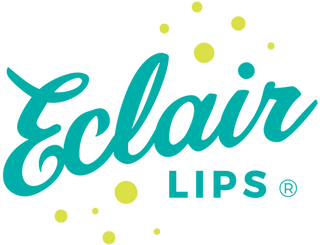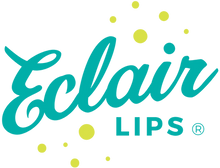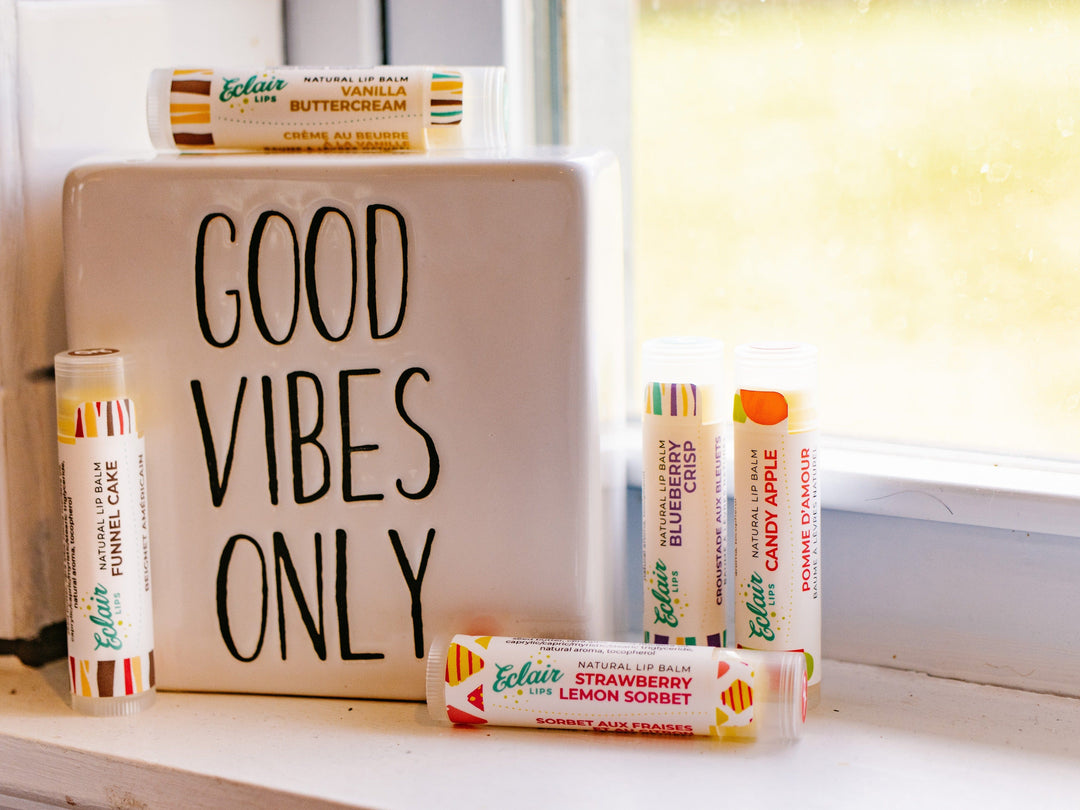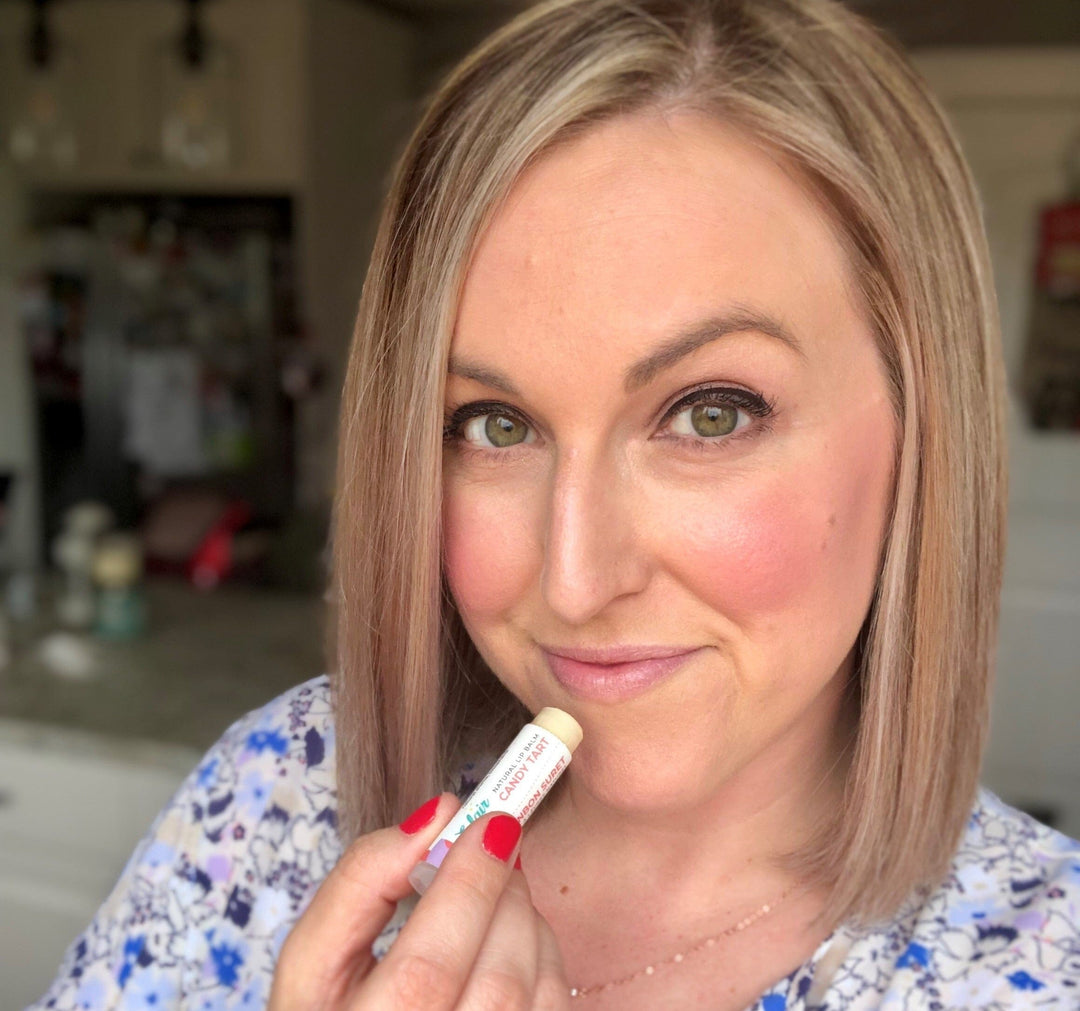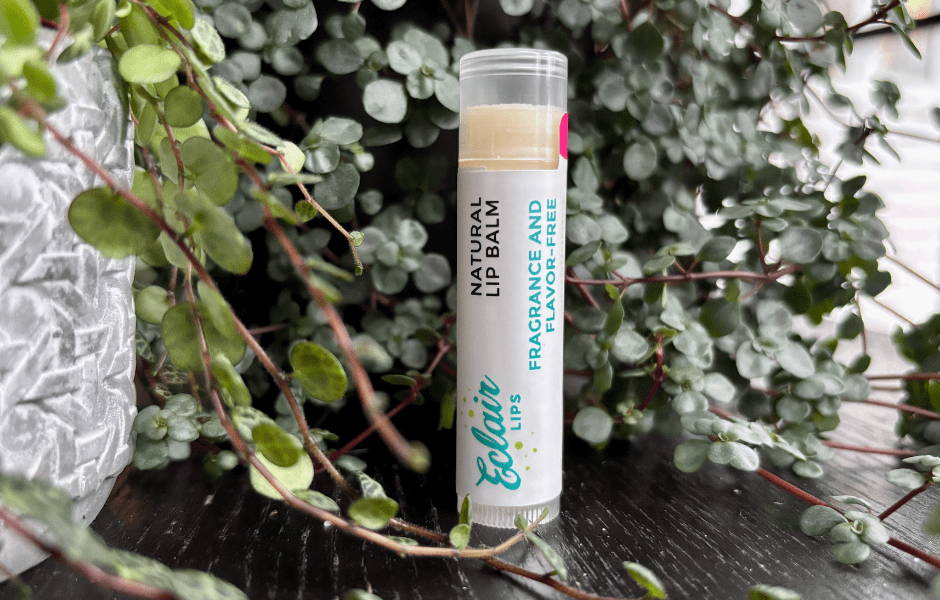Is SPF Lip Balm Necessary? When Sun Protection Actually Matters
When Sun Protection for Your Lips Actually Matters
If you've ever stood in front of the lip balm display wondering whether you need SPF in lip balm, you're asking the right question. Is SPF lip balm necessary for everyone? The honest answer is no, not for everyone.
But if you spend significant time outdoors, live in a sunny climate, or engage in activities with intense sun exposure, SPF protection for your lips makes genuine sense. Understanding when sun protection matters and when you can skip it helps you make better choices without overthinking it.

Quick Takeaway
- SPF lip balm isn't essential if you're mostly indoors
- Outdoor workers, athletes, and high-elevation activities benefit most
- Lips are vulnerable to sun damage and skin cancer
- Regular lip balm provides adequate protection for limited sun exposure
Contents
Why Lips Need Different Protection Than Other Skin
Your lips are built differently than the rest of your face, which affects how sun exposure impacts them. The skin on your lips is thinner and contains little to no melanin, the pigment that provides some natural sun protection for other areas. Your lower lip in particular receives significant UV exposure because of its position and angle relative to the sun.
Lips also lack the oil glands that help protect and maintain moisture in skin elsewhere on your body. This means they're more vulnerable to drying out and environmental damage, including damage from UV radiation. The thin barrier and lack of natural protective mechanisms make lips susceptible to both immediate effects (like sunburn) and long-term consequences (like premature aging and increased cancer risk).
Dermatological research confirms that chronic sun exposure on lips can lead to actinic cheilitis, a precancerous condition that shows up as persistent dryness, scaling, and white patches. This condition can progress to squamous cell carcinoma if left untreated. Your lower lip is especially at risk because it receives more direct sun exposure than your upper lip throughout the day.
Who Actually Needs SPF Lip Balm
If you work outdoors for your job (construction workers, landscapers, farmers, delivery drivers, or anyone spending multiple hours outside daily) do you need SPF lip balm? Yes, you genuinely benefit from sun protection. The cumulative exposure adds up significantly, and protecting your lips should be part of your broader sun safety approach.
Athletes and outdoor enthusiasts fall into this category too. If you're a runner, cyclist, hiker, skier, or participate in any sport that keeps you outside for extended periods, SPF protection helps prevent both immediate discomfort and long-term damage.
Water sports create additional risk because water reflects UV rays, intensifying exposure. Snow does the same thing, which is why winter outdoor activities can be particularly harsh on unprotected lips.
People living in sunny climates or at high elevations experience more intense UV exposure than those in cloudier regions or at sea level. If you're in Southern Alberta, British Columbia's interior, or similar sunny locations, or if you live somewhere like Denver or spend time in mountain environments, your baseline sun exposure is higher. SPF protection becomes more relevant for daily life, not just special outdoor activities.
When You Can Skip SPF
If your lifestyle keeps you primarily indoors (office work, indoor retail, working from home) do you need SPF in lip balm? Probably not as a daily necessity. The sun exposure you get walking from your car to the building or stepping outside briefly doesn't require dedicated SPF protection on your lips. A regular moisturizing balm provides adequate protection for this level of incidental exposure.
Short commutes and brief outdoor errands don't demand SPF lip balm either. If you're outside for fifteen or twenty minutes total throughout your day, standard lip balm creates enough of a physical barrier to minimize moisture loss and provide basic protection. The occlusive ingredients in regular balms (like beeswax and plant butters) offer some shielding effect even without SPF ratings.
Cloudy days still involve UV exposure, but the intensity is lower than bright sunny conditions. If you're in a climate with frequent overcast weather, your daily SPF needs are different than someone in constant sunshine. That doesn't mean UV rays disappear on cloudy days, but it does mean the urgency of SPF protection shifts depending on your overall sun exposure patterns.
The Taste and Texture Problem
One reason many people avoid SPF lip balm is simple: most formulas don't taste good and the texture can feel unpleasant. Chemical sunscreen ingredients required to achieve SPF ratings do affect both taste and feel. If you're looking for SPF lip balm that doesn't taste bad, you'll likely need to try several products before finding one you can tolerate.
The chemical filters used in sunscreens (ingredients like avobenzone, octinoxate, or oxybenzone) have distinctive flavours that range from bitter to chemical-tasting. Since lips are so close to your mouth and you inevitably ingest small amounts throughout the day, this taste becomes more noticeable than sunscreen on other parts of your body. Some people find this off-putting enough that they simply won't use SPF lip products consistently.
Texture is the other challenge. Many SPF lip balms feel thicker, chalkier, or greasier than regular balms. The zinc oxide or titanium dioxide used in mineral sunscreens can create a white cast or gritty sensation. Chemical sunscreens might feel slippery or leave an oily film. Finding a formula that feels comfortable enough that you'll actually reapply it throughout the day can be difficult.

Alternatives If You Skip SPF
If you decide SPF lip balm isn't necessary for your lifestyle or you can't find a formula you'll actually use, regular lip balm still provides meaningful protection. The waxy and oily ingredients in standard balms create a physical barrier that helps prevent moisture loss and offers some shielding from environmental stressors, including incidental sun exposure.
Wearing a wide-brimmed hat when you are outside provides significant sun protection for your entire face, including your lips. A hat with at least a three-inch brim blocks a substantial amount of direct UV rays and reduces overall exposure. This mechanical protection works regardless of what lip products you're using and doesn't come with taste or texture compromises.
Being strategic about when you're outside helps too. UV intensity peaks between 10 AM and 4 PM in most regions. If you can schedule outdoor activities for earlier morning or later afternoon when sun angle is lower, you reduce your exposure without needing to add extra products to your routine. This isn't always practical, but it's worth considering when you have flexibility.
Seeking shade when possible and being mindful of reflective surfaces (water, snow, sand, concrete) that intensify UV exposure gives your lips additional protection. These behavioral approaches work alongside whatever lip care products you choose to use, whether that includes SPF or not.
The Reapplication Reality
Even if you commit to using SPF lip balm, effectiveness depends entirely on consistent reapplication. Sunscreen products, including SPF lip balm, need to be reapplied every two hours during continuous sun exposure to maintain protection. Eating, drinking, and just talking throughout the day all remove product from your lips, which means you need to reapply even more frequently than the two-hour guideline.
This reapplication requirement is where many people's SPF protection breaks down. It's one thing to apply SPF lip balm once in the morning, but remembering to reapply multiple times throughout a busy day is another matter entirely.
If you're not going to reapply consistently, the initial application provides far less protection than you might think. This doesn't mean SPF lip balm is pointless, but it does mean the benefit depends heavily on your follow-through.
Regular lip balm needs reapplication too, but there's no specific timeline tied to effectiveness. You reapply when your lips feel dry, which might be every hour or every few hours depending on conditions. With SPF products, you need to reapply on schedule whether your lips feel dry or not, which requires more conscious attention and planning.
Understanding SPF Ratings
SPF numbers indicate how much longer you can theoretically stay in the sun without burning compared to having no protection. SPF 15 means you could stay in the sun fifteen times longer than you could without protection before burning. SPF 30 doubles that protection time compared to SPF 15, while SPF 50 adds relatively less additional protection beyond SPF 30.
For lip products, dermatological research generally recommends SPF 30 as the minimum if you're using sun protection. SPF 15 provides basic coverage but might not be sufficient for extended or intense exposure.
SPF 50 or higher offers maximum protection and makes sense for situations like beach days, skiing, or other high-exposure activities. The difference between SPF 50 and SPF 100 is minimal in practical terms, so there's no need to seek out extremely high numbers.
Broad-spectrum protection matters as much as the SPF number. "Broad-spectrum" means the product protects against both UVA and UVB rays. UVB rays cause sunburn, while UVA rays contribute to aging and skin cancer risk. Look for products labeled as broad-spectrum rather than just checking the SPF number, because you want protection from both types of UV radiation.
Why Some Lip Balm Companies Don't Offer SPF
You might notice that many independent and natural lip balm makers don't offer SPF options. This isn't because sun protection doesn't matter. It's because achieving SPF ratings involves significant regulatory requirements.
In both Canada and the United States, products with SPF claims are classified as drugs, not just cosmetics. This classification requires pre-market approval, specific testing protocols, standardized labeling, and ongoing compliance monitoring.
For small companies, meeting these requirements involves substantial costs in testing, regulatory submissions, and maintaining compliance. The approval process takes time and requires resources that many independent makers simply don't have. This means some of the most thoughtfully formulated, high-quality lip balms don't include SPF not because they couldn't make effective formulas, but because the regulatory burden is prohibitive for their business size.
Natural ingredients like coconut oil or shea butter do absorb tiny amounts of UV radiation, but not nearly enough to constitute real sun protection. Testing shows coconut oil provides approximately SPF 7 and shea butter around SPF 6 (well below the minimum SPF 15 that health authorities recommend for daily use). You can't rely on "natural SPF" claims without approved UV filters and proper testing to back them up.
Combining Sun Protection Strategies
The most effective approach to protecting your lips from sun damage combines multiple strategies rather than relying on any single solution. If you do use SPF lip balm, apply it generously and reapply according to the schedule. Layer it under lip color if you wear makeup, so you're not sacrificing protection for appearance. Many SPF lip balms work fine under lipstick or gloss once they've absorbed slightly.
Use your regular lip balm when you're indoors or during low-exposure times, and switch to SPF formulas when you'll be outside for extended periods. Having both types available means you're not dealing with SPF taste and texture when it's unnecessary, but you have protection available when circumstances call for it. This flexible approach works better for many people than trying to use SPF products constantly.
Physical barriers like hats, scarves, or even holding your hand up to shade your face during intense sun moments all contribute to overall protection. These might seem like small adjustments, but they meaningfully reduce cumulative exposure over time. Think about sun protection for your lips the same way you think about it for your body: multiple layers of defense work better than any single approach.
Special Situations That Increase Need
Certain activities or conditions dramatically increase how much you need sun protection for your lips. Water sports, whether swimming, kayaking, or paddleboarding, expose you to reflected UV rays bouncing off the water surface. This effectively doubles your sun exposure, making SPF protection much more important than it would be for the same amount of time spent on land.
Winter sports create similar conditions with snow reflection. Skiing, snowboarding, or even winter hiking in snowy conditions means you're getting UV rays both from above and reflected up from the snow.
Add high elevation (where UV intensity increases) and you have a perfect scenario for serious sun damage to unprotected lips. If you participate in these activities regularly, SPF protection is genuinely necessary, not optional.
Beach environments combine multiple risk factors: direct sun, reflected UV from sand and water, often high temperatures that encourage you to lick your lips, and typically extended time outdoors. A beach day without lip protection can leave you with painfully burned lips that take days to heal. If you're planning beach trips or coastal vacations, having SPF lip balm you'll actually use becomes important for comfort as well as long-term health.

The Connection to Overall Skin Cancer Risk
Lip cancer, while not as common as skin cancer on other parts of the body, occurs frequently enough to take seriously. The lower lip accounts for a significant portion of oral cavity cancers, and chronic sun exposure is a major risk factor. Fair-skinned individuals, people who work outdoors, and those with a history of cold sores or lip injuries face higher risk.
Actinic cheilitis, the precancerous condition that develops from chronic sun damage, typically appears as persistent dry patches, scaling, or whitish discoloration on the lips. It might feel rough or develop small sores that don't heal properly. If you notice these symptoms lasting more than a couple weeks despite using moisturizing balm, that's worth having a healthcare provider examine. Early detection and treatment prevent progression to actual cancer.
The good news is that prevention is straightforward. Consistent sun protection for your lips, whether through SPF products or physical barriers or both, significantly reduces your long-term risk.
If you have other risk factors (fair skin, outdoor occupation, family history of skin cancer), taking lip sun protection seriously makes even more sense. It's not about fear-mongering. It's about making informed choices based on your actual risk profile.
Practical Tips for Consistent Protection
If you decide SPF lip balm is necessary for your lifestyle, keeping it easily accessible increases the likelihood you'll actually use it. Put one in your car, one in your work bag or desk drawer, one in your outdoor gear or sports bag, and one at home. Having multiple tubes in the places you'll need them removes the friction of remembering to bring it along.
Set reminders on your phone or link reapplication to other regular activities. If you reapply sunscreen to your face every two hours during outdoor days, make lip balm part of that same routine. If you take a water break during your run or bike ride, that's your cue to reapply lip protection too. Habits form more easily when they're connected to existing behaviors.
Choose a formula you genuinely don't mind using. If the taste or texture bothers you significantly, you won't maintain consistent use no matter how much you intellectually understand its importance.
Be willing to try different products until you find something tolerable. Some people prefer mineral sunscreens despite potential white cast, while others find certain chemical formulas less offensive. Individual tolerance varies enough that what works for someone else might not work for you.
When Your Lip Balm Might Be Making Things Worse
This connects to a broader question: is my lip balm causing chapped lips? If you're using an SPF formula with ingredients that irritate your skin, it can create more problems than it solves.
Some people find chemical sunscreen ingredients like oxybenzone or octinoxate cause sensitivity or allergic reactions, leading to inflammation and persistent dryness. Mineral sunscreens with zinc oxide or titanium dioxide tend to be gentler for sensitive skin.
Watch for signs that your SPF lip balm isn't working for you: increased dryness, redness around your lips, burning or stinging sensation when you apply it, or lips that seem to get worse despite regular use. These symptoms suggest ingredient sensitivity or irritation. Switching to a different formula (either a mineral-based option or a different chemical combination) often resolves the problem.
Remember that not all reactions to SPF lip balm are about the sunscreen ingredients specifically. Flavors, fragrances, and preservatives can also cause issues. If you're having problems with SPF formulas, try the simplest possible version you can find (ideally fragrance-free and flavor-free) to see if that makes a difference.

Comparison Table: SPF vs. Regular Lip Balm
| Factor | Regular Lip Balm | SPF Lip Balm |
|---|---|---|
| Primary Function | Moisturizes and protects from environmental dryness | Moisturizes plus protects from UV damage |
| Ingredients | Waxes, butters, oils (beeswax, cocoa butter, coconut oil) | Same base plus chemical or mineral UV filters |
| Regulatory Status | Cosmetic product in Canada/US | Drug/sunscreen product requiring pre-market approval |
| Taste | Often pleasant or neutral | May have chemical/bitter taste from UV filters |
| Texture | Typically smooth, creamy, comfortable | Can feel thicker, chalkier, or greasier |
| Reapplication Need | When lips feel dry (variable timing) | Every 2 hours during sun exposure (scheduled) |
| Best For | Indoor lifestyle, incidental sun exposure, general moisture | Outdoor workers, athletes, high-UV activities, sunny climates |
| Cost | Generally affordable ($3-12) | Often more expensive due to testing requirements ($5-20) |
The Cost-Benefit Analysis
SPF lip balms typically cost more than regular formulas, partly because of the additional ingredients and partly because of the regulatory testing and approval costs companies must recover. If you need sun protection regularly, this cost makes sense.
If you're mostly indoors and would only use SPF lip balm occasionally, buying both a regular daily balm and a separate SPF option for specific situations might make more financial sense.
Consider how much product you'll actually use too. If you find a formula you like and use it consistently, the higher cost per unit doesn't matter much because you're getting meaningful protection. But if you buy expensive SPF lip balm that sits unused because you don't like the taste or texture, you've wasted money regardless of how good the sun protection theoretically is.
Generic or drugstore SPF lip balms work just as well as premium options if they have the same SPF rating and broad-spectrum designation. The active ingredients that provide sun protection are regulated and standardized, so a $6 pharmacy brand with SPF 30 protects as effectively as a $20 specialty brand with the same rating. The difference comes down to texture, taste, and inactive ingredients (legitimate factors for comfort and use, but not for actual UV protection).
Different Needs for Different People
Your specific need for SPF lip balm depends on multiple personal factors: your lifestyle, climate, skin tone (fair skin faces higher risk), age (cumulative damage matters), and outdoor activity levels. Someone who surfs every morning needs SPF protection much more than someone who works night shifts and rarely sees strong sunlight. Both people can have healthy lips, but their protective strategies should differ.
If you're uncertain whether you need SPF lip balm, consider tracking your sun exposure honestly for a week. Note how much time you spend outside, what activities you're doing, and what time of day you're in the sun.
If it totals less than thirty minutes daily and mostly involves walking to your car or brief errands, regular lip balm probably provides adequate protection. If you're outside for hours, especially during peak UV times, SPF makes more sense.
Your tolerance for reapplication matters too. If you know you won't remember to reapply every two hours, SPF lip balm provides less benefit than you might expect. It's better to acknowledge this reality and focus on what you will actually do consistently (whether that's wearing hats, seeking shade, using regular protective balm, or scheduling outdoor activities for lower-UV times of day).
Making Your Decision
So do you need SPF in lip balm? After reviewing all these factors, you're equipped to answer that question for your specific situation. If you work outdoors, play outdoor sports regularly, live in intense sun, or have risk factors for skin cancer, SPF protection makes genuine sense and the trade-offs of taste and texture are worth managing.
If you're primarily indoors with limited sun exposure, regular moisturizing balm provides adequate protection for your needs.
There's no universally correct answer that applies to everyone. What matters is making an informed choice based on your actual sun exposure, risk factors, and what you'll realistically use consistently. A fancy SPF lip balm that stays in your drawer doesn't protect you at all, while a simple daily balm you actually use provides real benefit even without sun protection.
Consider your needs seasonally too. Maybe you don't need SPF in winter when you're indoors most of the time, but it becomes important during summer camping trips or beach vacations. Flexible approaches that match your lifestyle prevent both under-protection and over-complication of your routine.
Frequently Asked Questions
Is SPF 15 enough for lips or should I use SPF 30?
Dermatological research generally recommends SPF 30 as the minimum for adequate sun protection. SPF 15 blocks about 93% of UVB rays, while SPF 30 blocks about 97%. That difference matters during extended sun exposure, making SPF 30 the better choice if you're using sun protection at all.
Can I use face sunscreen on my lips instead of SPF lip balm?
You can, but most people don't like the taste and face sunscreens aren't formulated for the unique needs of lip tissue. Face sunscreens often contain ingredients that feel fine on facial skin but uncomfortable on lips. If you can't find tolerable SPF lip balm, face sunscreen works in a pinch, but dedicated lip products are designed for this purpose.
Do I still need SPF lip balm on cloudy days?
UV rays penetrate clouds, so you still have sun exposure on overcast days (just less intense than bright sunshine). If you're going to be outside for extended periods even on cloudy days, SPF protection helps. For brief outdoor time on overcast days, it's less critical.
How often do I really need to reapply SPF lip balm?
The standard recommendation is every two hours during continuous sun exposure, and more frequently if you're eating, drinking, or swimming. This reapplication schedule is necessary to maintain protection, though many people struggle to follow it consistently in real life.
Are mineral sunscreens better than chemical ones for lips?
Mineral sunscreens (zinc oxide, titanium dioxide) tend to be less irritating and don't have the chemical taste that bothers many people. However, they can feel thicker or leave a white cast. Chemical sunscreens might taste unpleasant but often feel lighter. Neither is universally "better" (it depends on your priorities and sensitivities).
What if I can't find an SPF lip balm that doesn't taste terrible?
Focus on other sun protection strategies: wearing wide-brimmed hats, seeking shade, timing outdoor activities for lower-UV times of day, and using regular protective balm to maintain lip health. Multiple forms of protection work better than relying solely on products you won't actually use.
Does lip balm without SPF provide any sun protection?
Regular lip balm provides minimal physical barrier protection from its wax and oil content, but this isn't the same as rated SPF protection. The occlusive ingredients help prevent moisture loss and offer slight shielding from environmental elements, but you shouldn't count on them for meaningful UV protection.
Is it true that ChapStick or regular lip balm is the same as SPF versions?
No, is lip balm the same as ChapStick with SPF? Regular ChapStick or lip balm and SPF versions are different products. SPF formulations must include tested UV filters and meet regulatory standards. Regular balms moisturize but don't provide rated sun protection, even though both serve the broader category of lip care.
More Lip Balm Guides
- Is Lip Balm the Same as ChapStick? The Difference Explained
- Does Lip Balm Make Your Lips More Chapped? The Truth About the Myth
- SPF Lip Balm That Doesn't Taste Bad: Why It's Hard to Find
- Best Lip Balm: The One That Works for Your Needs in 2025
- Best Natural Lip Balm: How to Choose the Right One for Your Lips
- Best Hydrating Lip Balm: What Actually Keeps Lips Comfortable All Day
- Best Ingredients for Lip Balm: What Actually Makes the Difference
- Best Lip Balm for Winter: Survive the Cold Without the Cracks
- Best Lip Balm for Men: Fixing the Common Dealbreakers
- Best Tasting Lip Balm: How to Find Flavors You'll Actually Love
Explore Our Online Lip Balm Shop
At Eclair Lips, we believe the best lip balm is the one you love to use every day. Every balm is handmade in small batches with natural ingredients, playful dessert-inspired flavours, and a texture we obsessed over until it felt just right. We ship anywhere in Canada and the US, so whether you are in Toronto, Halifax, Las Vegas, or Chicago, you can stock up on your favourite lip balm Canada style, right from your couch.
In our shop, you will find tinted lip balm for a hint of colour, fragrance free balm if your lips are on the sensitive side, gentle lip scrubs to keep everything smooth, and even lip balm for kids when you want something safe and fun to share. Looking for variety? Try a lip balm set to explore new flavoured lip balm favourites or to give as a gift.
Our brand is built on honesty, humour, and heart, and that means no scare tactics, no overblown claims, just lip care that feels good and makes you smile.
Take a peek at our collections here: https://eclairlips.com.
Disclaimer: The information in this post is meant to be helpful, and while we love dorking out about lip balm, it isn't medical advice. Everyone's needs are different, so if you have concerns about allergies, sensitivities, pregnancy, or a medical condition, please check with a healthcare professional before trying new products.
